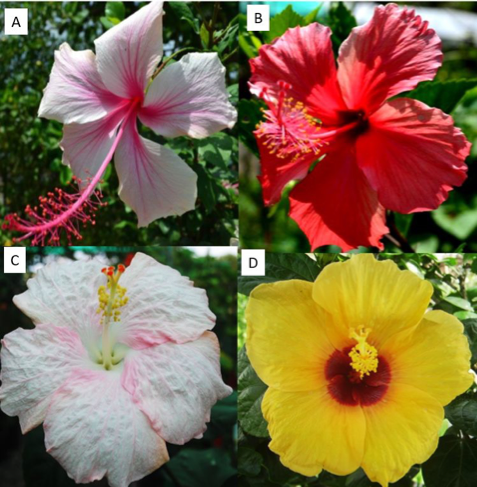VOLUME 12 NUMBER 2 (July to December 2019)

Philipp. Sci. Lett. 2019 12 (2) 167-175
available online: December 31, 2019
*Corresponding author
Email Address: pabsmagdalita@gmail.com
Date received: May 10, 2019
Date revised: December 12, 2019
Date accepted: December 19, 2019
ARTICLE
Phenotypic evaluation of floral characteristics for predicting the components of longer floral retention in Hibiscus rosa sinensis L. hybrids
by Pablito M. Magdalita*1,2, Jonard C. Valdoz2, Alangelico O. San Pascual2, and Rachel C. Sotto3
1Institute of Crop Science;
2Institute of Plant Breeding, College of Agriculture and Food Science; and
3Institute of Biological Sciences, College of Arts and Sciences,
University of the Philippines Los Baños, 4031 College, Laguna, Philippines
2Institute of Plant Breeding, College of Agriculture and Food Science; and
3Institute of Biological Sciences, College of Arts and Sciences,
University of the Philippines Los Baños, 4031 College, Laguna, Philippines
Explicit determinants of flower retention are necessary in the breeding and selection including the study of these processes. As an example, Hibiscus rosa-sinensis, a widely accepted ornamental crop for its aesthetic value, has ephemeral floral retention, thus it cannot be marketed as a cutflower. This limits the potential of this plant for marketing only as potted or hedge plant. To overcome this constraint, studies are necessary to determine the factors which may contribute to extend the floral retention of Hibiscus. Moreover, the effects of morphology on the progression of abscission is not closely studied. In view of this problem, this research was conducted primarily to evaluate the phenotypic traits and predict the morphological characters that may be used to identify breeds with longer retention on the plant. Four breeds were used, namely: Reddy-or-Not (RON) and Wilcox (WX) representing one-day old variety, while Loren Legarda x Estrella F. Alabastro (LLxEFA) and Gelia Castillo (GC) represented two-day old varieties. Floral retention on the plant was quantified from each breed and found to be differential with 13 hr for RON, 14 hr for WX, 47 hr for LLxEFA and 51 for GC. Morphology of the flowers was studied using four characters: peduncle diameter at attachment site to the receptacle, peduncle length, peduncle diameter and petal thickness at the attachment site. All characters except peduncle length correlated very strongly with floral retention. Characters that are very strongly correlated with floral retention were selected and subjected to linear regression analysis to generate predictive values. For the regression analyses, the following are the characters and their model's respective level of adequacy or determination includs: the uppermost diameter (R2= 85%); the receptacle diameter (R2=92%); and the petal thickness at the attachment site (R2=71%). It is recommended to use the receptacle diameter as the primary determinant of flower retention in a breed, since it is conspicuous and, at the same time, this had the highest level of adequacy or determination of 92%. Using the predictive models generated, this will allow the efficient selection and evaluation process to identify the best breed/s despite of the high number of samples being evaluated in the Hibiscus breeding program.
© 2024 SciEnggJ
Philippine-American Academy of Science and Engineering